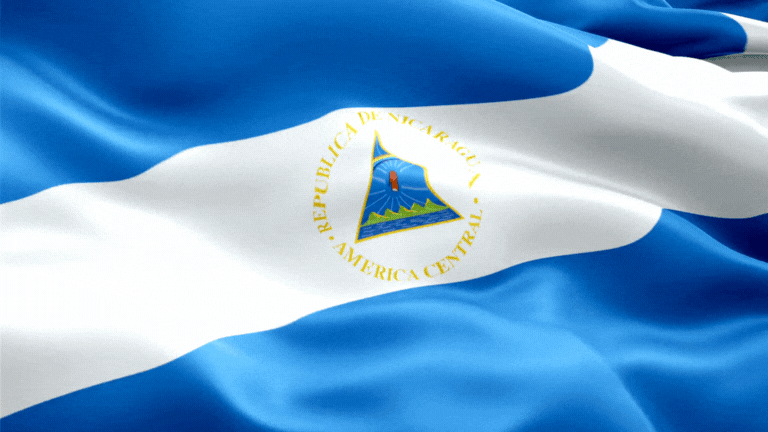Please be aware that this article may contain links to products and services we recommend. If you click on any of these links, we may earn a commission at no extra cost to you. We only endorse products and services that we believe will add value to our readers. Learn more here.
Nicaragua Flag: History & Symbolism
Hack The Quiz
7/4/20242 min read
This article explores the history and symbolism of the Nicaragua flag, highlighting Nicaragua’s location in Central America and explaining how the flag’s design reflects the country’s ideals of liberty, peace, and unity.
Where is Nicaragua?
Nicaragua is located in Central America, bordered by Honduras to the north, Costa Rica to the south, the Pacific Ocean to the west, and the Caribbean Sea to the east. Known for its diverse geography, Nicaragua has stunning landscapes that include lakes, volcanoes, and rainforests. It is the largest country in Central America by land area.
Nicaragua gained independence from Spain on September 15, 1821, alongside other Central American nations. The current flag, adopted in 1908, was inspired by the flag of the Federal Republic of Central America, reflecting the country’s historical connection to its neighbors.
The History of the Nicaragua Flag
The flag of Nicaragua was officially adopted on August 27, 1908, and is closely tied to the design of the Federal Republic of Central America’s flag, which represented the union of five Central American nations after independence from Spain. The blue and white stripes of the Nicaraguan flag pay homage to that shared history.
The national coat of arms was added to the center of the flag, symbolizing Nicaragua’s sovereignty and its place within the Central American region. Since its adoption, the flag has become a symbol of the country’s independence and unity.
Breaking Down the Nicaragua Flag’s Design
The Nicaraguan flag consists of three horizontal stripes—two blue stripes on the top and bottom, with a white stripe in the center. The national coat of arms is placed in the middle of the white stripe. Each element of the flag carries important symbolic meaning tied to Nicaragua’s history, ideals, and geography.
Let’s break down the elements of the flag:
The Blue Stripes
The two blue stripes represent the Pacific Ocean and the Caribbean Sea, which border Nicaragua and other Central American countries. The blue also symbolizes liberty, brotherhood, and the hope for peace.
The White Stripe
The white stripe in the center stands for peace, purity, and the unity of the Nicaraguan people. It reflects the country’s desire for social harmony and justice.
The Coat of Arms
The coat of arms in the center of the flag includes several key symbols. The triangle represents equality, while the rainbow symbolizes peace. Inside the triangle, there are five volcanoes, representing the unity and strength of the five original Central American republics (Guatemala, El Salvador, Honduras, Nicaragua, and Costa Rica). Above the volcanoes is a red Phrygian cap, a symbol of liberty, with a bright sun rising behind it, symbolizing a hopeful future.
Final Thoughts
The flag of Nicaragua is a meaningful symbol of the country’s dedication to peace, unity, and liberty. The blue and white stripes reflect its historical ties to Central America and its geographical location between two oceans, while the coat of arms emphasizes the ideals of equality and freedom.
Since its adoption in 1908, the flag has been a cherished emblem of national pride, flown during important events such as Independence Day on September 15 and at international gatherings. It serves as a reminder of Nicaragua’s rich history, its peaceful aspirations, and its enduring unity.
Expand your mind ...
Explore trivia that broadens your understanding and knowledge of the world.
WE ARE HERE FOR YOU
JOIN US and hack the quiz
info@hackthequiz.com
© 2024. All rights reserved.



